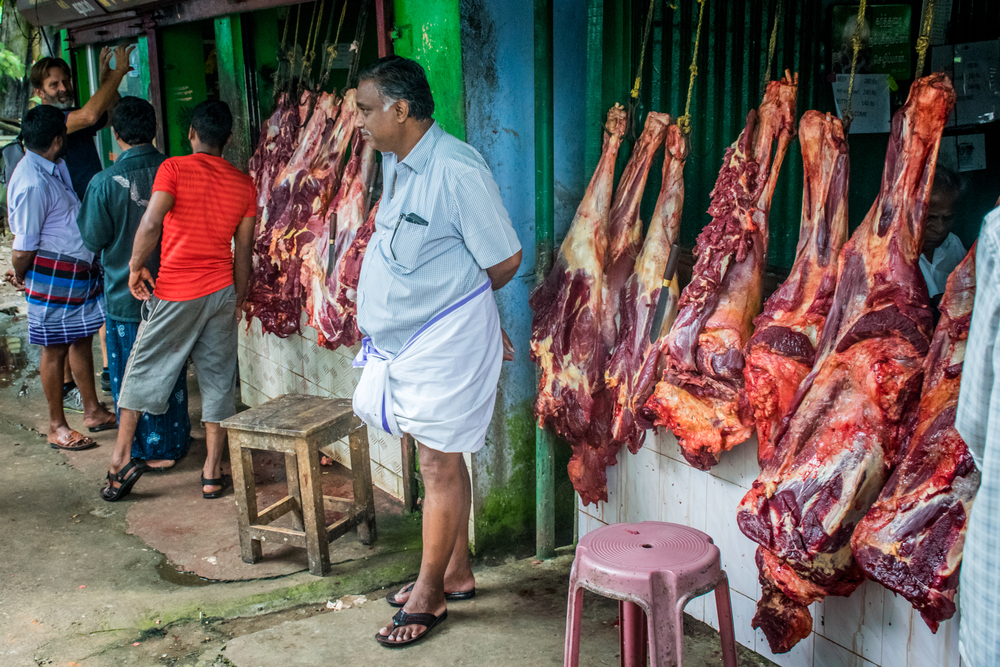
India’s beef exports plunge 21 pct in 2018
India’s beef exports – primarily buffalo meat – plunged 21 per cent year-on-year to 1.10 million tonnes in 2018, compared to the 1.39 million tonnes recorded in 2017, as beef shipments to China (via Vietnam) plummeted in the latter months of the year, according to official data analysed by Salaam Gateway.
India’s beef exports revenues dropped to $3.31 billion in 2018 from $4.17 billion in the previous year, according to foreign trade data from the Director General of Commercial Intelligence and Statistics (DGCIS), Ministry of Commerce and Industry.
The primary culprit for the weaker performance was a 32 per cent year-on-year drop in beef supply to Vietnam in 2018. The Southeast Asian country, which accounted for more than half of India’s total beef export in fiscal year 2017, imported 522,546 million tonnes of Indian beef in 2018, in comparison to 767,044 million tonnes in 2017.
Industry sources said India’s beef export has been affected as the Vietnam market was closed for some time due to “local issues” there.
“Indian exporters are still facing difficulties in shipping their containers to Vietnam as it is having some disputes with China,” Dr. Surendra Kumar Ranjhan, director of the New Delhi-based Mirha Exports Pvt. Ltd., told Salaam Gateway in a phone interview.
In addition, he said, many of India’s containers of beef and other food items including pork and poultry were held up at Hong Kong seaports.
China, which is the world’s largest beef-consuming market, has in the recent past increased its customs control to clamp down on the illegal supply of food items into the country through the grey market.
“All the containers which are lying there are facing problems and they are asking for more and more discounts. A few of them have been able to get some containers sent to China, but others are still stuck,” Ranjhan said.
China officially doesn’t allow imports of Indian beef fearing this can be contaminated by the foot-and-mouth disease virus (FMDV), but much of India’s beef shipments to Vietnam eventually find their way to China through the grey market, which, industry sources say, is “a well-established syndicate”.
Sirajuddin Qureshi, managing director of meat processor and exporter Hind Agro Industries Ltd., said, “The supply to Vietnam has fallen in recent months. The international market has been unstable for some time as the demand is fluctuating.”
Exporters say they are hopeful the problem will be resolved soon. India sent a high-level delegation comprising officials from the Commerce Ministry and the Agricultural and Processed Food Products Export Development Authority (APEDA) to Vietnam last month. Vietnam has reduced import duty for beef for six other countries after agreeing to the Comprehensive and Progressive Agreement for Trans-Pacific Partnership (CPTPP), which entered into force on December 30 for Japan, Mexico, Singapore, Canada, New Zealand and Australia.
While India managed to ramp up its supply to a number of other markets, including Indonesia, which bought 78,484 million tonnes of Indian beef last year in comparison to 26,824 million tonnes in 2017, industry sources say it is still very low in volume terms when compared with Vietnam.
Indonesia has so far approved 27 meat plants in India, but Ranjhan said only three of them have been given the order to export beef. “These three companies have managed to get another 16,000 tonnes of quota recently,” he said, adding that more plants may be allowed to export when the new quota is released in the near future.
While demand from Indonesia is expected to continue to grow, Ranjhan said China is still a very big market as they have a lot of requirement. “I don’t think Indonesia or any other market will be able to fill that gap.”
| INDIA'S TOP 10 BEEF EXPORT DESTINATIONS IN 2018 | |
| COUNTRY | QTY (In MT) |
| Vietnam | 522,546 |
| Malaysia | 108,937 |
| Philippines | 41,798 |
| UAE | 34,771 |
| Myanmar | 34,688 |
| Egypt | 29,237 |
| Saudi Arabia | 29,036 |
| Algeria | 18,923 |
| Russia | 15,196 |
| Angola | 14,151 |
|
Data source: India's Director General of Commercial Intelligence and Statistics (DGCIS), Ministry of Commerce and Industry |
|
TOUGH 2019
Indian exporters will be further tested in 2019 as they are expecting tough competition from arch rival Brazil, which, industry sources say, is currently selling its beef at $100 cheaper than India’s, as the Brazilian real has been devalued significantly recently.
“Brazil is our main competitor and they have officially signed a $1.5 billion contract with China to supply beef. This is also another factor that’s going to impact our exports in 2019,” Ranjhan said.
After a year-long export ban following the outbreak of the meat corruption scandal, Brazil has once again begun supplying its meat to many countries, boosting its export to 1.64 million tonnes in 2018, registering a year-on-year growth of 11 per cent in volume terms, according to the Brazilian Beef Exporters Association (ABIEC).
China and Hong Kong have collectively accounted for 46 per cent of Brazil’s total beef export in 2018.
SHUTDOWNS, SHRINKING PROFITS
Given that most of the demand is from Vietnam, which has gone done by 30 per cent, Ranjhan said many small and medium-sized plants are now forced to stop operations as “it is not economical for them to prepare the meat and keep it stored”.
“Only the bigger plants are able to operate right now,” he said.
Indian exporters are further hit by the falling price of its beef in the international market at a time when the input costs continue to rise at home. The average price of beef used to be $3,500 per tonne in the international market; it has now come down to $2,900.
“In 2018, Indonesia was buying Indian beef at $3,600 per tonne but now they are taking it for $3,000,” said a Delhi-based exporter.
On the back of that, exporters complain that their procurement cost has gone up significantly in the domestic market, causing their profit margin to shrink.
The prices of the by-products such as leather and hides, which are another source of income for meat traders, have also gone down as the government charges “very high duty” on their export.
“Our hides are cheaper but people are not able to export outside as the duty is 60 per cent. There was a meeting of APEDA with all the manufacturers. We have requested Directorate General of Foreign Trade (DGFT) to reduce the duty on the export of raw hides,” Ranjhan said.
Profit margins, another major exporter said, used to be in the range of 8-10 per cent some years back, “but now it has come down to 2-3 per cent, as the procurement cost has gone up by 5-6 Indian rupee per kilogram”.
He explained that 85 per cent of the cost goes towards procuring raw material, 10 per cent for processing and 5 per cent for overheads. “If you analyse it, people who used to make 8 per cent profit earlier by selling all the by-products (the prices of which have also gone down) are now hardly making 2 to 3 per cent profit,” said the exporter, who didn’t wish to be named.
Salaam Gateway, however, couldn’t independently verify his claims as many exporters it approached for comment didn’t wish to reveal their profit margins.
Given the current scenario, Indian meat suppliers don’t expect export figures to improve much in the remaining months of this fiscal year, which, in all likelihood, will end with a negative growth rate of 10 to 15 per cent.
“The export is expected to remain flat in February also as [it’s] China has New Year. The export will not improve until the problem is sorted and the China market opens up. So I think there will be a drop in the export of meat from India,” Ranjhan said.
Qureshi of Hind Agro said India’s exports may improve later in the year, but that would depend on price, demand and availability of raw materials.
(Reporting by Syed Ameen Kader; Editing by Emmy Abdul Alim emmy.alim@refinitiv.com)
Our Standards: The Thomson Reuters Trust Principles
© SalaamGateway.com 2019 All Rights Reserved

Syed Ameen Kader, White Paper Media